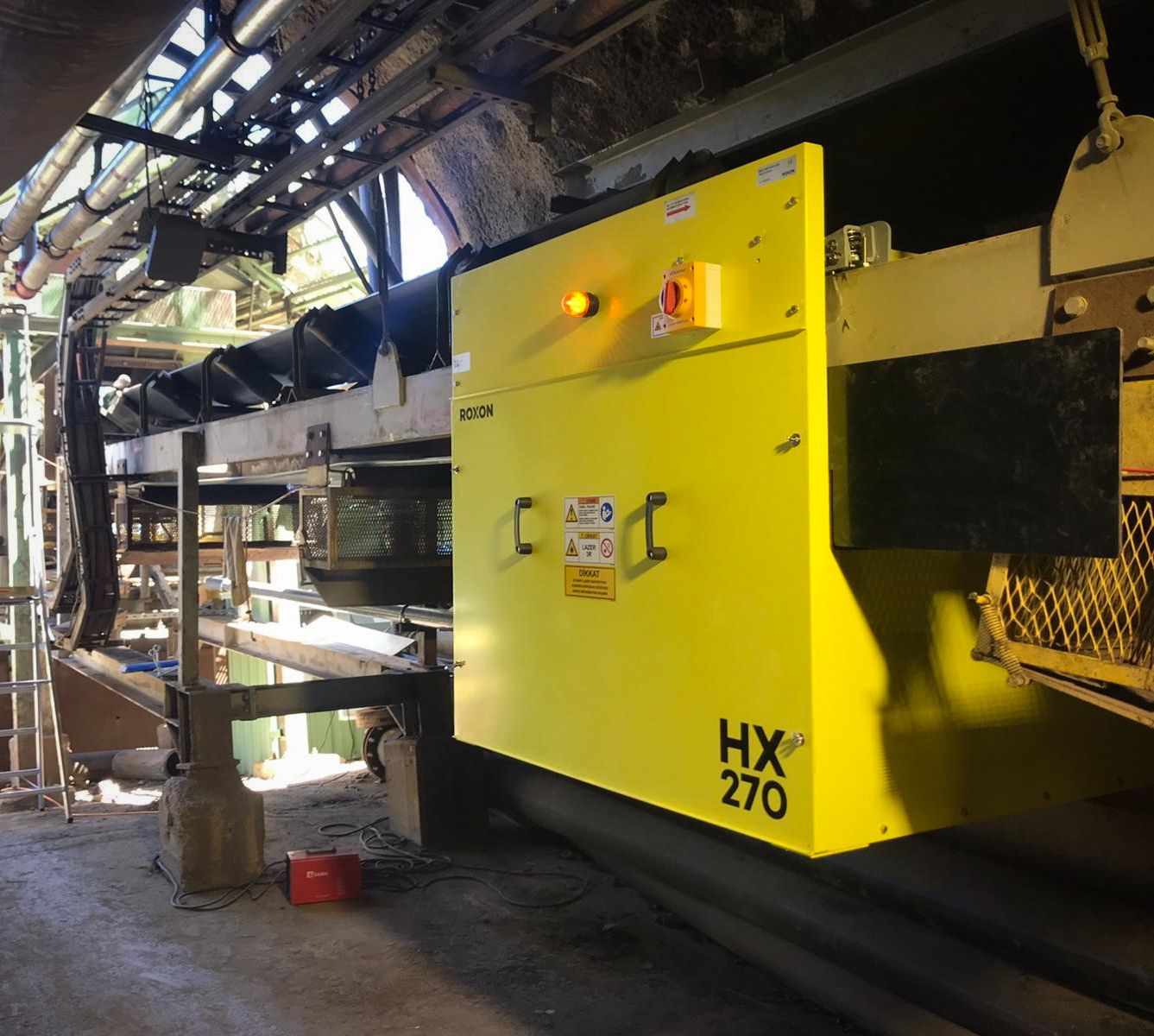Top 5 Benefits of Investing in Belt Condition Monitoring

Mining is a particularly complicated sector with its equipment, risks, safety concerns and service environment. The installation and maintenance of mining equipment are expensive as well.
The large majority of operating costs is related to maintenance. Mining companies spend anywhere from 30 to 50 per cent of their annual operating expenses on mining equipment maintenance.
Conveyor belt systems account for a large chunk of a mine’s maintenance costs. They are a single point of failure in almost all mining setups. Operations depending on critical conveyors know that alternatives for unexpected conveyor downtime are either expensive, wasteful or non-existent.
In the highly competitive mining market, improved equipment reliability and reduced maintenance costs are critical differentiators for a company. A conveyor belt condition monitoring system can help companies achieve these goals by increasing the effectiveness of their maintenance budget.
What is a conveyor belt condition monitoring system?
A conveyor belt condition monitoring system is a tool with self-diagnostic and reporting capabilities that constantly monitors the health of a conveyor belt in real-time. It uses 3D scanning and measurement methods to fully automate the condition based monitoring process.
This system is more proactive than a preventive maintenance system. It also requires fewer resources.
There are many other benefits of using condition-based maintenance. Let’s explore some of them.
Top 5 benefits of a conveyor belt condition monitoring system
- Increase in Machinery Lifespan
- No More Unexpected Belt Damages and Costly Downtime
- Savings in Maintenance Expenses
- Improved Safety at Work
- Maximised product output
Increase in Machinery Lifespan
Mining equipment is built to last. Its manufacturers use heavy-duty, high-quality components that are rated for the demanding application. But the equipment needs timely maintenance for a satisfactory wear life.
Condition based maintenance ensures that maintenance is carried out as and when needed instead of fixed intervals. Such timely care leads to greater longevity as the belt does not stay in a damaged state for a long time.
No more unexpected belt damages and costly downtime
Initially, some companies preferred manual inspection to take stock of belt health. But this proved to be time-consuming and expensive. It would also lead to occasional errors followed by catastrophic belt failures at times. Since 2008, the focus has shifted to adopting more reliable automated systems with nominal error rates.
A conveyor belt condition monitoring system provides real-time feedback of critical/non-critical damages to the belt. It carries out constant failure analysis of belt conveyor systems for condition monitoring purposes. The system scans both sides of the belt, one at the loading and the other at the transfer point, for a minimal time lag in reporting inconsistencies.
On detecting a critical fault, the system stops the conveyor immediately. Non-critical damage creates an alarm in the control room for further review but does not stop the belt. This minimises costly downtime without risking belt failure.
Savings in maintenance expenses
Condition monitoring of conveyor belts saves maintenance expenses on multiple fronts. At the outset, it cuts out the cost of hiring a larger staff to assess belt health. These systems work round the clock with only a small team to oversee alarms and system maintenance.
Secondly, there is no need to stop the material flow as the system scans the belt during operation, saving the cost of downtime.
The cost of emergency servicing is also eliminated, which is expensive in terms of staff and spare requirements.
A spare conveyor belt needs to be stored on-site to enable faster servicing. The storage of belts requires space, a specific temperature and humidity, which can prove costly. If the spare belt is not used within five years of purchase, the company must still renew it as it gets weaker over time. Thus, the storage of conveyor system spares impact profitability.
An online monitoring system can minimise the costs associated with the purchase and storage of conveyor system spares.
Improved safety at work
Catastrophic belt failures are responsible for many types of losses. A failing belt can drop material on employees, machines, devices, or sites where we cannot recover it. Such failures cause injury to staff and equipment damage and cause loss of life, money, reputation and time.
Proper belt condition monitoring leads to improved site safety. Even minor faults generate alarms in the control room. The operator can convey relevant safety information to those working near the conveyor line.
Maximised product output
Breakdown maintenance hurts the profitability of a mining setup. The productivity plummets as time and money go into repairing faulty machinery and broken parts.
It is common for mines to make hundreds of thousands of dollars per hour. However, the conveyor system is a single point of failure, and when it stops, the production comes to a halt.
A condition based maintenance program that alerts the maintenance teams of pending maintenance ensures that the conveyor system does not stop unless absolutely necessary. It is even better than planned maintenance as there may be times when the scheduled maintenance checks did not bring up any concerns. The conveyor still had to be stopped for inspection, though, causing a loss of productivity.
Summing it up
A proactive approach to maintenance is much better than a reactive or even a preventive one. Its benefits are many and far-reaching. Having a conveyor belt condition monitoring system in place boosts productivity on many different levels. We can pair it with all types of smooth belts (fabric or steel cord belts).
Visit www.roxon.com/hx-products for more information or get in touch to speak to a technical specialist.